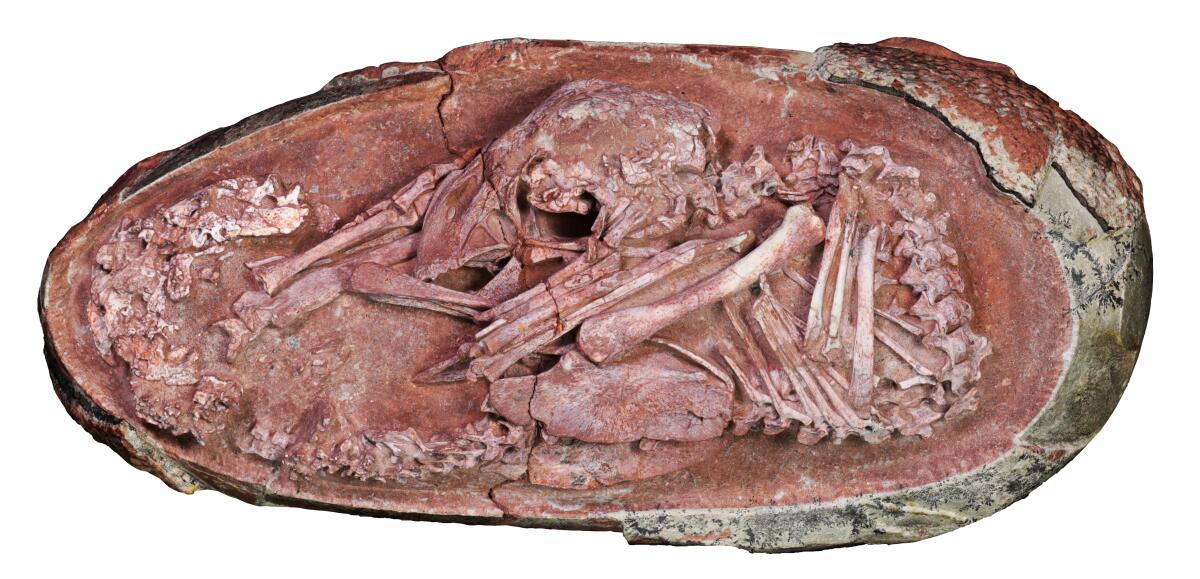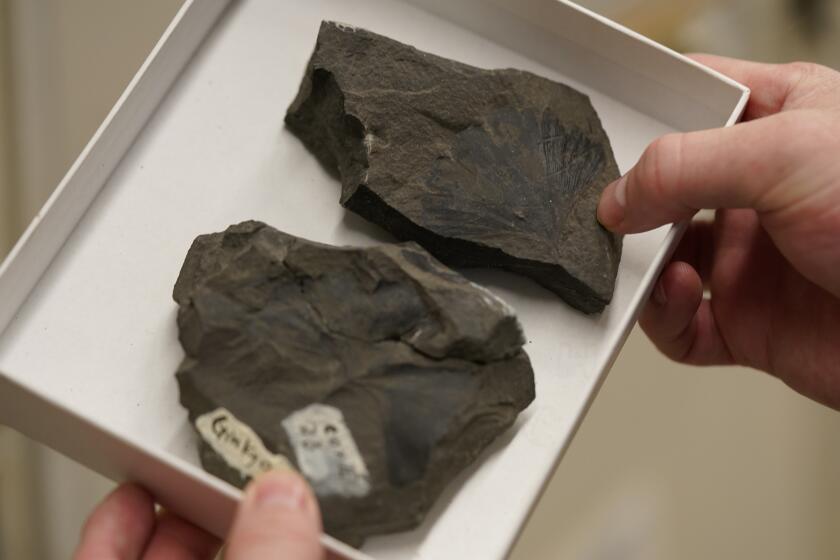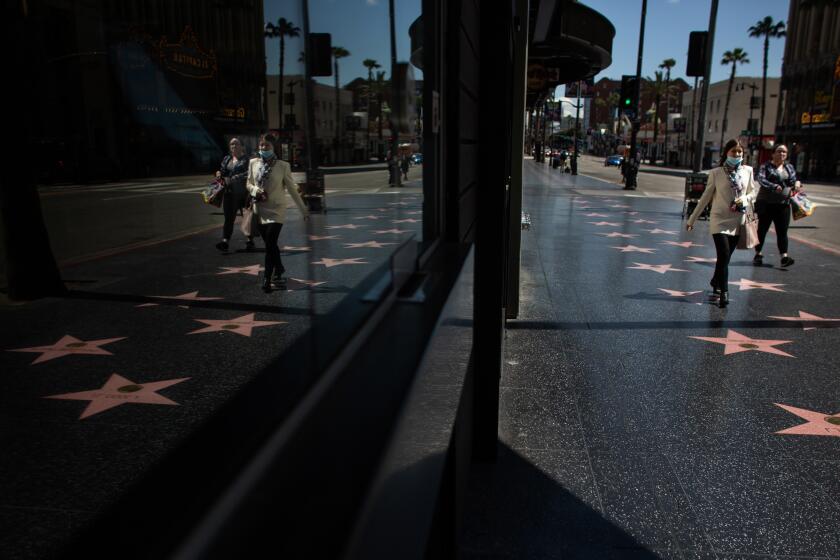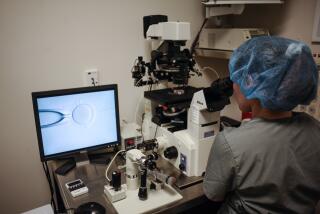An exquisite fossil’s lessons for hard times

- Share via
Just before Christmas, the journal iScience reported the discovery of a “late Cretaceous oviraptorid theropod dinosaur embryo … preserved in-ovo” — that is, a fully articulated dinosaur skeleton, fossilized inside its egg. Fossilized dinosaur eggs aren’t rare, but complete embryos are. As Aylin Woodward explained in the Wall Street Journal, “The bones of embryonic dinosaurs are so fragile they are often destroyed before the fossilization process is complete.”
The egg and its contents are believed to be between 66 million and 72 million years old. It’s a relic of what’s known as deep time.
For paleontologists, the find is significant because it provides further evidence of the evolutionary relationship between dinosaurs and birds. “The head,” the authors of the study wrote, “lies ventral to the body, with the feet on either side, and the back curled along the blunt pole of the egg in a posture previously unrecognized in a non-avian dinosaur, but reminiscent of a late-stage modern bird embryo.” Such a position is known as “tucking,” and it situates hatchlings to peck through their shells so they can emerge.
For me, however, the fascination is more elemental: The fossilized oviraptorosaur expands our sense of life and death by suggesting that, on some essential level, nothing ever disappears.
Ginkgo trees have survived virtually unchanged for 200 million years, a fact that may help scientists decipher ancient climates.
Deep time refers to geologic or celestial time, the billions of years the planet has existed, the infinite chronology of the universe. In such a context, the span of a dinosaur’s gestation or a human life — or human history — is negligible at best. The embryo, and its survival as a fossil, is a marker of all those eons, a signal that our concept of “real time” is an illusion.
That we can see it, study it, learn from it is what I mean when I say nothing disappears. That dinosaur embryo may have died tens of millions of years ago, but still it exists. This tells us something about continuity; it shifts our view of the concerns and conflicts of the moment, refocusing our lives through a wider lens.
In the thrall of deep time, we have no choice but to reckon with our insignificance. And paradoxically, that reckoning can be a consolation in an uncertain world.
The same week the iScience paper was published, the Omicron variant of the coronavirus exploded across the United States. Cases in Los Angeles County increased from 3,000 to nearly 10,000 in just three days. Inflation and lingering supply chain issues stressed the economy. Airlines canceled thousands of flights.
That’s to say nothing of our politics, which continue to be toxic and divisive. Just days before the fossil report appeared, West Virginia Sen. Joe Manchin III effectively torpedoed President Biden’s “Build Back Better” legislation, although it’s still possible that Congress will find a way to pass a scaled-back bill.
Our lockdown habits — walking more, shifting from fast to slow, honoring history — provide connections Los Angeles needs.
Amid the uncertainty and chaos of our daily lives, the embryo fossil reminds us that the vicissitudes of the instant are little more than passing shadows, as ephemeral as gusts of air.
“The whirlwind’s spent before the morning ends; / The storm will pass before the day is done,” Lao Tse asserts in the “Tao Te Ching.” “Who made them, wind and storm? Heaven and earth. / If heaven itself cannot storm for long, / What matter, then, the storms of man?”
Given the storms we’re confronting, in other words, why not take the longer view?
For some people, that sort of perspective emerges from religion. I am not one of them. For me, faith or meaning grows out of our physical existence, our experience on Earth. I believe in love, I believe in family, I believe in decency, I believe in hope. But none of these will save us from disorder or from death.
Deep time requires that I integrate those limitations into a broader vision, a more expansive lineage. As a 72-million-year-old dinosaur embryo teaches us something new about how birds came to be, it also shows us that that we are part of something bigger than ourselves.
I don’t mean to be glib or denialist about our current crises; I spent much of the last week ordering N95 masks and home coronavirus tests, loading in supplies. My wife and I are hunkered down, trying not to obsess about infection numbers, trying to remain present and continue with our lives. We are vigilant, keeping a healthy distance from our neighbors and washing our hands as we have for nearly two years now: 20 seconds, soap and water, every time we step inside.
The oviraptorosaur embryo and its discovery offer — for me, at any rate — a hard but comforting message in difficult times: We are transient, but the universe endures. Regardless of the awful anxieties and dislocations of this moment, we remain part of an ever-abiding, if ever-changing, continuum.
Let a fossilized dinosaur remind us of all the ways that existence goes on.
David L. Ulin is a contributing writer to Opinion.
More to Read
A cure for the common opinion
Get thought-provoking perspectives with our weekly newsletter.
You may occasionally receive promotional content from the Los Angeles Times.











